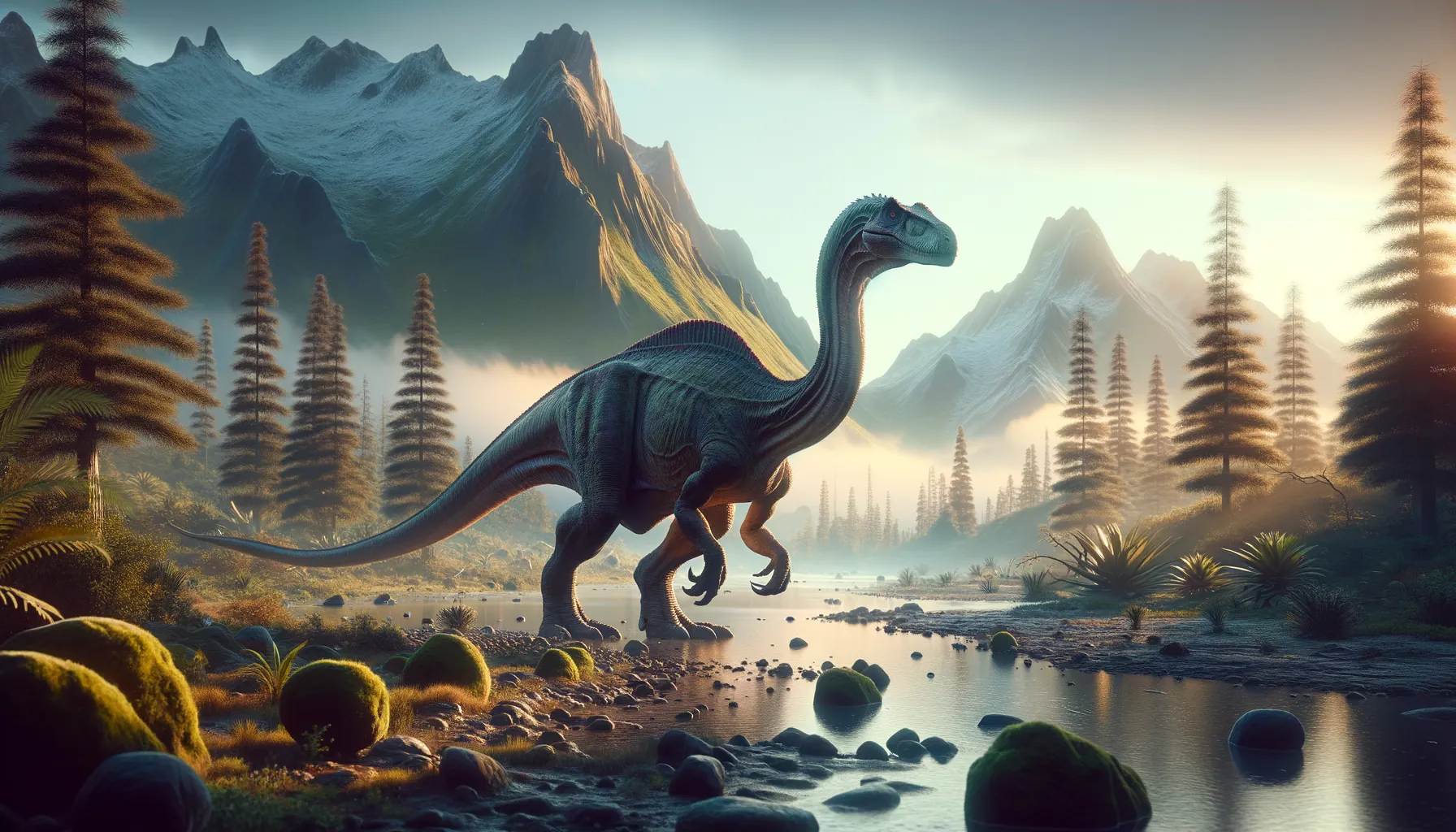
Lufengosaurus
Herbivore giant of early Jurassic China.
Period
Jurassic
Length
Roughly 6 meters in length.
Height
About 2.5 meters tall at the hips.
Weight
Approximately 1.7 tons.
Lufengosaurus was a medium-sized, early Jurassic dinosaur that roamed what is now China over 180 million years ago. Known for its long neck and tail, this herbivore was one of the first dinosaurs discovered in China. Its fossils have been incredibly valuable, helping paleontologists understand the evolution of early dinosaurs and their migration patterns across ancient landscapes.
Diet
Lufengosaurus was herbivorous, primarily feeding on plants. It used its long neck to reach vegetation that other herbivores could not access easily.
Hunting
Being a herbivore, it did not hunt but grazed on a variety of plant species. It may have relied on its size to fend off smaller predators and to access branches less accessible to other diners.
Environmental challenges
During its time, Lufengosaurus faced challenges such as climatic shifts that affected plant availability. It lived in a period marked by volcanic activity, which could have disrupted the environment. Predatory threats came from theropods that competed for resources and could threaten juveniles.
Speed
Relatively slow, suitable for moderate cruising.
Lifespan
Estimated to be several decades.
First discovery
Found in the Lufeng Basin, China in 1930.
Fun Facts
- Lufengosaurus was one of the first dinosaurs discovered in China.
- It lived during the Early Jurassic period, about 190 million years ago.
- This dinosaur was a herbivore, meaning it only ate plants.
- Lufengosaurus had a long neck and tail, which helped it reach leaves on tall trees.
- Its name means 'Lufeng lizard,' named after the region in China where it was found.
- Lufengosaurus grew up to 20 feet long, making it a sizable dinosaur for its time.
- Fossils of Lufengosaurus have helped scientists learn a lot about early dinosaur biology and growth.
Growth and Development
Lufengosaurus likely underwent rapid growth spurts early in its life to increase its chances of survival. Fossil evidence suggests that it possessed a high metabolic rate, indicative of its growth patterns. As it matured, its limbs grew stronger, enabling it to support its large body and engage in more extensive foraging.
Habitat
Lufengosaurus inhabited lush floodplains, which provided ample food resources. These regions supported diverse plant life, crucial for its survival. The dinosaur needed to traverse wetlands and forests, adapting to varied landscapes as it migrated.
Interaction with other species
Lufengosaurus coexisted with other herbivores, sometimes competing for the same resources. It may have moved in herds as a protective strategy against predators. Its interactions with carnivorous species were likely cautious, as it aimed to avoid becoming prey.
Natural lifespan
Lufengosaurus had a natural lifespan of several decades, assuming it survived beyond its vulnerable juvenile stages.
Reproduction
Lufengosaurus reproduced by laying eggs, likely in nests constructed in secluded areas. Females might have guarded these nests, ensuring the young had the best chance of surviving the vulnerable early stages of life. Fossilized embryos have been found, shedding light on its early development.
Social behaviour
It is plausible that Lufengosaurus exhibited social behavior, moving in groups for protection and efficient foraging. Herd dynamics may have helped mitigate risks from predators. Communication among individuals would have been important for coordinating movements and alerting to threats.
Fossil locations
Fossils of Lufengosaurus have been primarily located in Yunnan Province, China. Its discovery in the 1930s marked an important moment in paleontology, adding to the understanding of Jurassic fauna. The well-preserved specimens have become pivotal in studying early dinosaur evolution.
